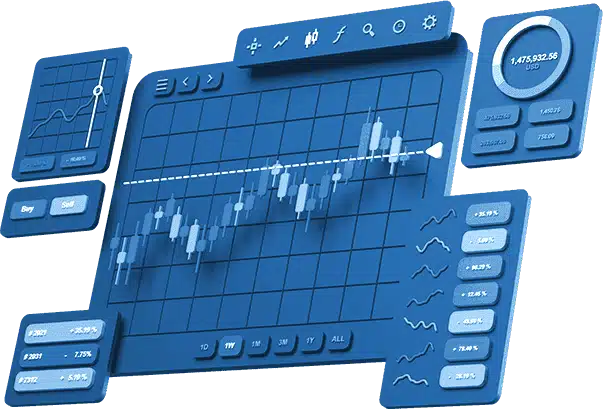Online Yatırımlar Nasıl Yapılır?


Online yatırım dünyasına ilk kez giriş yapıyorsanız karmaşık gelebilir. AvaTrade olarak bilmeniz gereken tüm temel bilgileri bir yere toplayarak işinizi kolaylaştırdık. Size öğreteceğimiz şeyler arasında yatırımların tamamen kendi kaderinizi tayin etmekten ibaret olduğu, ne kadar yatırım yapacağınıza sizin karar vereceğiniz, ne zaman hangi yatırımları açacağınızı ve kapatacağınızı bilmek olacak. Yatırımlara yeni başlayan birisinin öğrenmesi gereken ilk şey, piyasanın davranışlarını ve fiyatları etkileyen en temel faktörlerin arz ve talep olduğudur. Arz ve talep aynı ölçüde olmadığı zaman fiyatta hareket yaşanır. Eğer piyasadaki alıcı sayısı, satıcı sayısından daha fazlaysa fiyat yükselecektir; tam tersi durumda ise mevzubahis varlık değer kaybedecektir. Bu mantık gayet basittir ve CFD ve döviz yatırımlarının temel prensibidir.AvaTrade’de canlı veya demo hesap için kayıt oluşturduğunuzda size forex yatırımlarının temellerinin yanı sıra strateji oluşturmayı, piyasa analizi yapmayı vb. önemli şeyleri öğretecek çok sayıda makale, video, webiner ve diğer türde eğitim araçları bulabileceksiniz.Size nasıl bir yatırım planı oluşturulduğunu göstererek başlayacağız. Öncelikle bir yatırımcı olarak ne istediğinizi bilmeli, nasıl bir risk olanağınız olduğunu tespit etmeli, kâr hedeflerinizi ve yatırımlara ayırabileceğiniz vakti belirlemelisiniz.Online yatırımlar yaparken öğrenilmesi gereken bir diğer şey de nasıl kayıpların küçük tutulup, kazançların büyütüleceği ve risk/kazanç oranının her yatırımda 3’e 1 olarak belirleneceğidir.
Forex Yatırımı Nasıl Yapılır?
En basit tanımıyla, döviz yatırımı, bir paritede yer alan birincil dövizin alış veya satışını gerçekleştirmek için ne kadar ikincil dövize ihtiyaç duyulduğudur. Bu dövizler parite olarak işlem görürler. Örneğin, dünyanın en çok yatırım yapılan paritesi EUR/USD, Euro ve Amerikan Dolarından oluşur. Endüstriyel üretim, enflasyon, siyasi gelişmeler gibi ekonomik faktörlerin hepsi paritelerin kurlarını etkileyebilir. Döviz paritesini ister alıyor ister satıyor olun, bu faktörler piyasayı etkileyen esas etkenlerdir.
Örnek amaçlı olarak bir forex yatırımından bahsetmek gerekirse:
EUR/USD paritesinde EUR birincil döviz ve USD ikincil döviz konumundadır ve bir Euro ile alınabilecek Amerikan Doları miktarını gösterir. EUR/USD paritesinin fiyatı 1.2000 ise, 1 Euro’nun değeri 1.2000 Amerikan Doları demektir.
Euro’nun önümüzdeki 48 saat içerisinde Amerikan Doları karşısında değer kazanacağını düşünüyorsanız, Euro’nun ALIŞını gerçekleştirirsiniz. Paritenin kuru sizin belirlediğiniz yönde hareket ederse elinizdeki Euroları satar ve kazanç sağlarsınız. Online yatırımlar yaparken kazançlar da bu şekilde elde edilir.
Döviz Yatırımları Neden Yapılmalı?
Forex yatırımları dünyanın en büyük piyasasıdır ve 24 saat aktif olan bu piyasa her gün ortalama $3.2 trilyon hacminde işlem yapılır. Forex ile hisse senedi piyasaları arasında çeşitli farklar bulunur. AvaTrade’le yatırım yaparken:
- Yatırımlarınızda herhangi bir komisyon uygulanmaz; AvaTrade sadece alış ile satış fiyatları arasındaki spread oranlarından kazanç sağlar
- Haftanın 5 günü 24 saat boyunca yatırım yapabilir ve ne zaman ve nasıl yatırım yapacağınızı her daim kontrol edebilirsiniz
- AvaTrade potansiyel kazançlarınızı arttırabilmeniz için ‘e kadar kaldıraç oranı sunar
- Forex ve Hisse Senedi, Emtia ve Endeks CFD’leri de dâhil olmak üzere 250’den fazla enstrümanla işlem yapabilirsiniz
- Sadece gibi küçük bir rakamla başlayabilir ve kendi dilinizde eğitim ve destek alabilirsiniz
Nasıl Yatırım Yapılır?
Söz konusu online yatırımlar olduğunda, yatırımlarınız için doğru brokerı seçmeniz, vereceğiniz en önemli kararlardan biridir. AvaTrade ile online yatırımlara başlarken %100’e kadar hoş geldin bonusundan, ücretsiz demo hesaptan, farklı şekillerde eğitim kaynaklarından ve daha fazla desteğe ihtiyaç dilinizde ulaşabileceğiniz yatırımcı destek temsilcilerinden yararlanabilirsiniz.
- Online gerçek hesabınızı açın ve tamamen güvenli bir ortamda kişisel ve finansal bilgilerinizi girin. Herhangi bir ek ücret veya komisyon bulunmamaktadır. Hesabınızı aktifleştirdiğinize göre ilk yatırımınızı yapmaya hazırsınız demektir.
- Araştırmanızı yaptıktan ve ihtiyaç duymanız halinde ekibimizle iletişime geçtikten sonra yatırım platformu muza giriş yapıp, seçtiğiniz enstrümanla yatırım yapabilirsiniz. Ayrıca spread oranlarını ve seçtiğiniz platformdaki kaldıraç oranıyla kaç birim alış gerçekleştirebileceğinizi görebilirsiniz. Unutmayın, küçük rakamlarla başlayarak zamana yaymak, yatırımları daha iyi anlamanızı sağlayacaktır. Pozisyon açtığınızda zarar durdurma emirleri kullanmanız hayati önem taşır.
- Pozisyonunuzu açtıktan sonra yatırımınızı sürekli olarak takip etmeniz ve performansından haberdar olmanız gerekir. Hareketin yavaşladığını ve piyasaların sizin tersinize hareket etmeye başladığını görüyorsanız, pozisyonunuzu satmayı değerlendirebilir veya hesabınızda yaşanabilecek zararı sınırlaması için zarar durdurma emrinin devreye girmesini beklemeyi tercih edebilirsiniz.
- Ara sıra portföyünüzde değişiklikler yapmanız tavsiye edilir. Gelişmekte olan piyasalara sürekli olarak maruz kalıyor olabilir ve yatırımlarınızı çeşitlendirmeyi tercih edebilirsiniz. Her koşulda, stratejinizi kullanmayı sürdürmeli ve aşırı derecede yatırım yapmamalısınız.
- Yatırımınızdan hedefe ulaştığınız bir kâr elde ettiyseniz kapatın ve kazancınızı bakiyeye ekleyin. Hesabınızdan çekim talebini kolayca verebilirsiniz. Bunun için platformu ya da internet sitemizi kullanabilirsiniz.
Nasıl Online Yatırım Yapılır AvaTrade’le Öğrenin
Forex yatırımlarının nasıl yapıldığını öğrenmek mi istiyorsunuz? Finans piyasalarına girerek kazançlarınızı arttırma potansiyeline mi bakıyorsunuz? AvaTrade size forex yatırımlarında nasıl uzmanlaşacağınızı öğretebilir. Hemen başlayın ve ihtiyacınız olan tüm araçlara hemen ulaşın!












